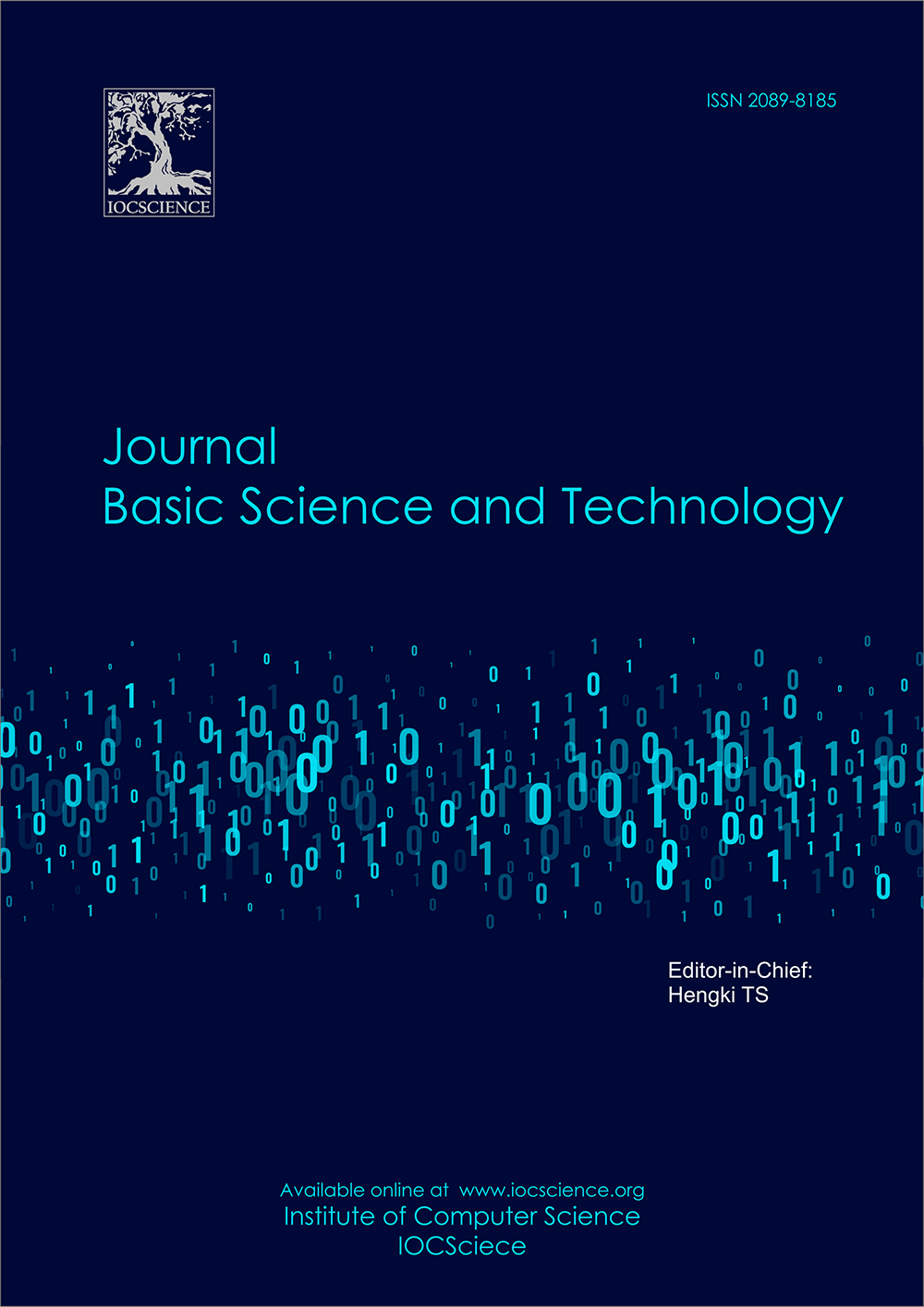Robust Salt Body Segmentation in Seismic Datasets Using a Multi-Scale Deep Neural Framework
Kata Kunci:
Salt Body Segmentation, Seismic Image Interpretation, Multi-Scale Deep Neural Network, TGS Salt Dataset, Semantic SegmentationAbstrak
Accurate segmentation of salt bodies in seismic images is a critical task in subsurface exploration, as salt structures often act as traps for hydrocarbons. Traditional manual and rule-based methods are time-consuming and prone to inaccuracies due to the complex morphology and low contrast of salt boundaries. In this study, we propose a robust multi-scale deep neural network framework designed to enhance salt body segmentation in seismic datasets. The framework leverages a multi-scale encoder-decoder architecture integrated with Atrous Spatial Pyramid Pooling (ASPP) and attention mechanisms to effectively capture both global context and fine-grained structural details. Evaluated on the publicly available TGS Salt Identification Challenge dataset, the proposed model outperforms several state-of-the-art baselines in terms of Intersection over Union (IoU), Dice coefficient, and overall segmentation accuracy. The results demonstrate the framework’s effectiveness in accurately delineating salt regions, even in the presence of noisy or ambiguous seismic data, offering a reliable tool for aiding geophysical interpretation and exploration.
Referensi
Aarre, V., Astratti, D., Al Dayyni, T. N. A., Mahmoud, S. L., Clark, A. B. S., Stellas, M. J., Stringer, J. W., Toelle, B., Vejbæk, O. V, & White, G. (2012). Seismic detection of subtle faults and fractures. Oilfield Review, 24(2), 28–43.
Alsadi, H. N. (2017). Seismic hydrocarbon exploration. 2D and 3D Techniques, Seismic Waves.
Deng, W., Shi, Q., & Li, J. (2021). Attention-gate-based encoder–decoder network for automatical building extraction. IEEE Journal of Selected Topics in Applied Earth Observations and Remote Sensing, 14, 2611–2620.
Dillon, A. (2000). Spatial?semantics: How users derive shape from information space. Journal of the American Society for Information Science, 51(6), 521–528.
Diniz, C., Cortinhas, L., Pinheiro, M. L., Sadeck, L., Fernandes Filho, A., Baumann, L. R. F., Adami, M., & Souza-Filho, P. W. M. (2021). A large-scale deep-learning approach for multi-temporal aqua and salt-culture mapping. Remote Sensing, 13(8), 1415.
Gavrishchaka, V., Yang, Z., Miao, R., & Senyukova, O. (2018). Advantages of hybrid deep learning frameworks in applications with limited data. International Journal of Machine Learning and Computing, 8(6), 549–558.
Huang, J., & Nowack, R. L. (2020). Machine learning using U-net convolutional neural networks for the imaging of sparse seismic data. Pure and Applied Geophysics, 177(6), 2685–2700.
Huang, L., Dong, X., & Clee, T. E. (2017). A scalable deep learning platform for identifying geologic features from seismic attributes. The Leading Edge, 36(3), 249–256.
Jones, I. F., & Davison, I. (2014). Seismic imaging in and around salt bodies. Interpretation, 2(4), SL1–SL20.
Kainkaryam, S., Ong, C., Sen, S., & Sharma, A. (2019). Crowdsourcing salt model building: Kaggle-TGS salt identification challenge. 81st EAGE Conference and Exhibition 2019, 2019(1), 1–5.
Liu, Q., Fu, L., & Zhang, M. (2021). Deep-seismic-prior-based reconstruction of seismic data using convolutional neural networks. Geophysics, 86(2), V131–V142.
Milosavljevi?, A. (2020). Identification of salt deposits on seismic images using deep learning method for semantic segmentation. ISPRS International Journal of Geo-Information, 9(1), 24.
Monaghan, A. A. (2017). Unconventional energy resources in a crowded subsurface: Reducing uncertainty and developing a separation zone concept for resource estimation and deep 3D subsurface planning using legacy mining data. Science of the Total Environment, 601, 45–56.
Radha, M. G. (2020). Data-driven health monitoring and lifestyle interventions: towards management of hypertension and other lifestyle diseases through data-driven modelling of physiology and behaviour.
Rajput, V. (2021). Robustness of different loss functions and their impact on networks learning capability. ArXiv Preprint ArXiv:2110.08322.
Shafiq, M. A., Wang, Z., AlRegib, G., Amin, A., & Deriche, M. (2017). A texture-based interpretation workflow with application to delineating salt domes. Interpretation, 5(3), SJ1–SJ19.
Shi, Y., Wu, X., & Fomel, S. (2019). SaltSeg: Automatic 3D salt segmentation using a deep convolutional neural network. Interpretation, 7(3), SE113–SE122.
ul Islam, M. S. (2020). Using deep learning based methods to classify salt bodies in seismic images. Journal of Applied Geophysics, 178, 104054.
Wang, S., Mu, X., Yang, D., He, H., & Zhao, P. (2020). Attention guided encoder-decoder network with multi-scale context aggregation for land cover segmentation. IEEE Access, 8, 215299–215309.
Wang, Z., Di, H., Shafiq, M. A., Alaudah, Y., & AlRegib, G. (2018). Successful leveraging of image processing and machine learning in seismic structural interpretation: A review. The Leading Edge, 37(6), 451–461.
Wellmann, F., & Caumon, G. (2018). 3-D Structural geological models: Concepts, methods, and uncertainties. In Advances in geophysics (Vol. 59, pp. 1–121). Elsevier.
Xu, R. (2018). Corpus-based terminological preparation for simultaneous interpreting. Interpreting, 20(1), 29–58.
Xu, Y., & Goodacre, R. (2018). On splitting training and validation set: a comparative study of cross-validation, bootstrap and systematic sampling for estimating the generalization performance of supervised learning. Journal of Analysis and Testing, 2(3), 249–262.
Ye, Z., Fu, Y., Gan, M., Deng, J., Comber, A., & Wang, K. (2019). Building extraction from very high resolution aerial imagery using joint attention deep neural network. Remote Sensing, 11(24), 2970.
Zhang, K., Liu, X., & Chen, Y. (2020). Research on semantic segmentation of portraits based on improved deeplabv3+. IOP Conference Series: Materials Science and Engineering, 806(1), 12057.
##submission.downloads##
Diterbitkan
Cara Mengutip
Terbitan
Bagian
Lisensi
Hak Cipta (c) 2025 santhi priya sunkara, Deepti Sharma

Artikel ini berlisensi Creative Commons Attribution-NonCommercial 4.0 International License.







